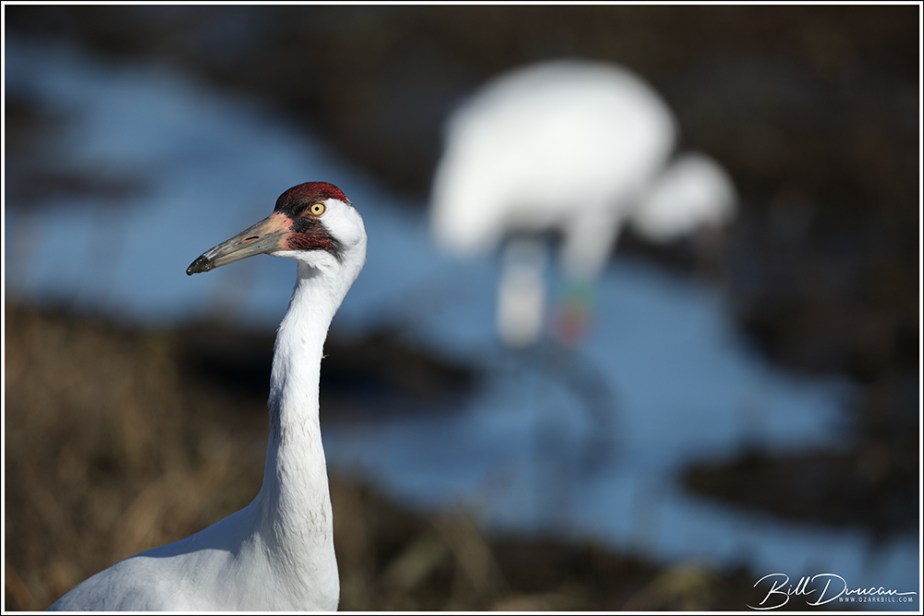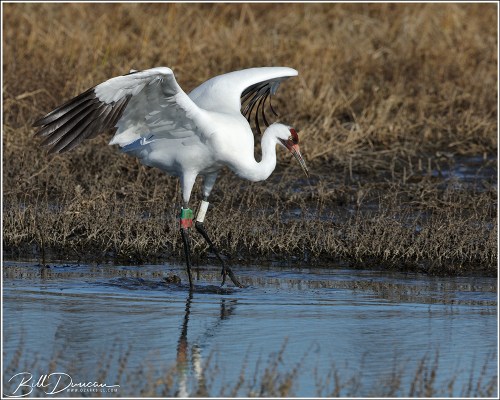
Camera settings: f/6.3, 1/3200 sec., ISO-320, 700 mm focal length.
I have traveled to Kaskaskia Island, IL at least 7 times in the past four years in hopes of being fortunate to find these beautiful birds in close distance to a road. Most visits result in being able to find them, but most often they are a football field or more away. Back in early January 2020, Sarah and I finally won the lottery.

Camera settings: f/8, 1/2000 sec., ISO-250, 700 mm focal length.
We found these birds quite close to the road and actively foraging in the permanent drainage canals of this river valley farming area.

Camera settings: f/8, 1/2000 sec., ISO-250, 700 mm focal length.
Whooping Cranes are still endangered; however, thanks to the USFWS/USGS captive breeding and reintroduction program, this species has come back from the brink of extinction. In 1941 the species was down to only 21 individuals due to rampant conversion of natural habitat to farmland, coastal development, and unregulated hunting. The captive breeding program was initiated in 1967 and today there are now more than 800 birds in the wild.

Captive breeding and reintroduction has now been transferred from the federal institutions to a good number of other organizations who will continue towards the goal of making the Whooping Crane self-sufficient again. This efforts is not completely without problems as there have been and continue to be problems associated with getting the reintroduced birds to migrate, interact and successfully nest.

Camera Settings: f/6.3, 1/2000 sec., ISO-250, 420 mm focal length equivalent.
A case in point may be the recent history of these birds in the state of Missouri (only the 8th record in MO since 1953). The first reports of a four-bird cohort observed in Columbia MO was in May, 2016. These were the same birds observed over-wintering in Kaskaskia Island, IL. These four birds were from a release who then strayed from their population that was following the traditional Wisconsin to Florida migration route. Since then at least two of the original four birds have died. Hopefully these two (I have been told, but have not yet been able to confirm that this is a sexual pair) will get back on track one day and do their part in propagating the species.

Thanks for visiting.
-OZB
Excellent shots, we had Sandhill Cranes here at a local marsh a few years ago, unfortunately I didn’t see them. I really like the picture you got of the one in flight.